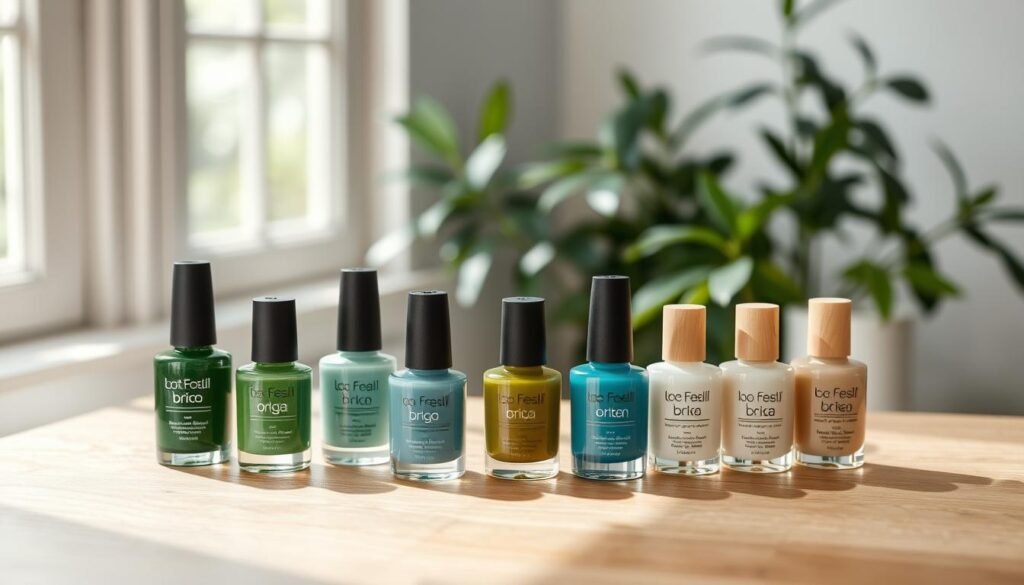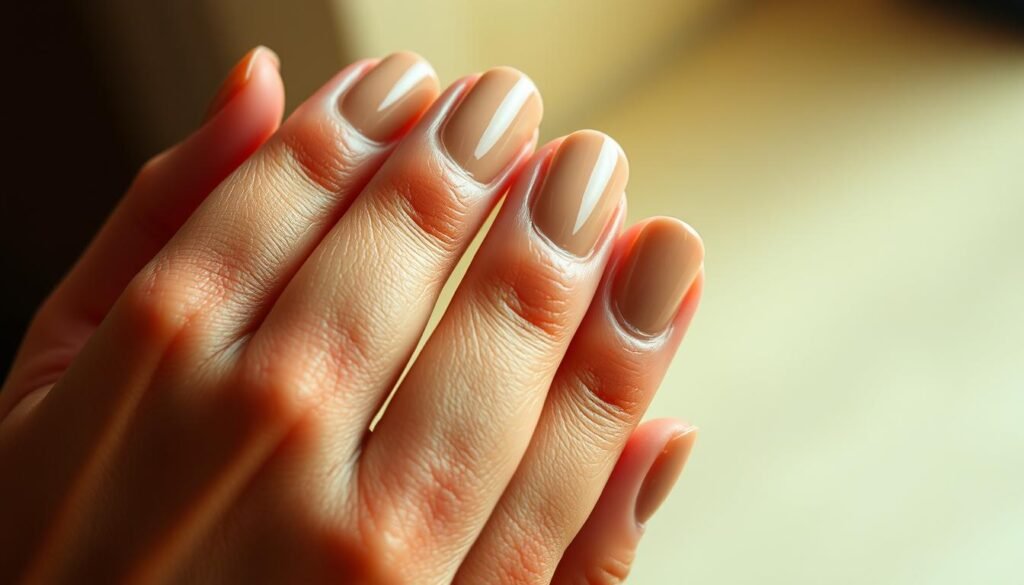In recent years, the beauty industry has seen a significant shift towards more sustainable and environmentally friendly products. One of the trends that have gained immense popularity is the use of eco-friendly nail polish. Consumers are becoming increasingly aware of the ingredients in their beauty products and are opting for long-lasting nail polish that is not only good for their nails but also for the planet.
The demand for natural nail polish has risen due to its cleaner ingredients and reduced environmental impact. Unlike traditional nail polishes that contain harsh chemicals, natural alternatives offer a safer and more sustainable option. This shift is not just about personal health but also about reducing the ecological footprint of the beauty industry.
Key Takeaways
- Eco-friendly nail polish is becoming increasingly popular due to its cleaner ingredients.
- Natural nail polish offers a safer and more sustainable alternative to traditional nail polish.
- The shift towards natural nail polish is driven by consumer awareness of environmental impact.
- Long-lasting nail polish is a key benefit of natural nail polish.
- Consumers are opting for products that are good for both their health and the planet.
What Makes Nail Polish “Natural”?
The beauty industry is witnessing a paradigm shift with the emergence of natural nail polish, but the definition remains ambiguous. As consumers increasingly seek out products that are not only effective but also safe and sustainable, understanding what constitutes a natural nail polish is crucial.
Definition and Standards
Natural nail polish is defined by its adherence to certain standards that prioritize the use of non-toxic ingredients and environmentally friendly practices. Unlike conventional nail polishes, natural formulas avoid harmful chemicals, making them a safer choice for both users and the environment.
Common Toxic Ingredients to Avoid
The nail polish industry has long been associated with certain toxic ingredients that pose health risks. Understanding these chemicals is key to appreciating the value of natural nail polish.
The “Big3” Chemicals
The “Big3” chemicals – formaldehyde, toluene, and DBP (dibutyl phthalate) – have been widely used in nail polish formulations. However, their potential health risks have led to a decline in their use in natural nail polish.
Additional Harmful Ingredients
Beyond the “Big3,” other harmful ingredients such as camphor and xylene are also being phased out in natural nail polish formulations due to their adverse health effects.
The Rise of Natural Nail Polish in the Beauty Industry
The beauty industry is witnessing a paradigm shift with the rise of natural nail polish. As consumers become increasingly aware of the health and environmental impacts of their beauty choices, the demand for eco-friendly and non-toxic nail care products has surged.
Market Growth and Consumer Demand
The natural nail polish market is experiencing rapid growth, driven by consumer demand for safer and more sustainable beauty products. According to market trends, the global natural nail polish market is expected to continue its upward trajectory, with sales projected to increase significantly over the next few years.
| Year | Market Size | Growth Rate |
|---|---|---|
| 2022 | $100M | 10% |
| 2023 | $120M | 12% |
| 2024 | $150M | 15% |
Shift Towards Clean Beauty
The rise of natural nail polish is part of a broader shift towards clean beauty, with consumers seeking products that are free from harmful chemicals and toxins. This trend is driven by a growing awareness of the potential health risks associated with conventional nail polish, including exposure to toxic chemicals like toluene and formaldehyde.
Benefits of Using Natural Nail Polish
Natural nail polish is not only better for the environment, but it also provides several health benefits and improves nail health. By choosing natural nail polish, individuals can enjoy a safer, more sustainable beauty routine.
Health Advantages
One of the primary health advantages of natural nail polish is its non-toxic composition. Unlike conventional nail polishes that contain harsh chemicals like toluene, formaldehyde, and DBP (dibutyl phthalate), natural nail polishes are free from these harmful substances, reducing the risk of health issues such as reproductive problems and cancer.
Nail Health Benefits
Natural nail polish promotes healthier nails by using ingredients that nourish and strengthen the nail. These polishes often contain plant-based ingredients and minerals that help to moisturize and condition the nails, leading to stronger, healthier nails over time.
Reduced Chemical Exposure
By opting for natural nail polish, individuals significantly reduce their exposure to harmful chemicals found in traditional nail polishes. This reduction in chemical exposure not only benefits personal health but also contributes to a cleaner, healthier environment.
| Benefits | Natural Nail Polish | Conventional Nail Polish |
|---|---|---|
| Toxic Ingredients | Free from harsh chemicals | Contains toluene, formaldehyde, DBP |
| Nail Health | Nourishes and strengthens nails | Can dry out and weaken nails |
| Chemical Exposure | Reduces chemical exposure | Increases chemical exposure |
Key Ingredients in Natural Nail Polish
The shift towards natural nail polish has led to the discovery of unique ingredients that benefit both nail health and the environment. These ingredients not only provide a safer alternative to traditional nail polish but also offer various benefits for nail care.
Plant-Based Alternatives
Plant-based alternatives are revolutionizing the nail polish industry. Ingredients derived from plants such as corn, potato, and tapioca are used to create nail polishes that are free from harsh chemicals. These plant-based formulas are not only eco-friendly but also provide a healthier option for nail care.
Mineral Pigments
Mineral pigments are another key ingredient in natural nail polish. These pigments, derived from natural minerals, offer a range of vibrant colors without the use of synthetic dyes. Mineral pigments are known for their durability and lightfastness, ensuring that the color remains vibrant over time.
Natural Hardeners and Strengtheners
Natural hardeners and strengtheners play a crucial role in maintaining healthy nails. Ingredients such as bamboo extract, wheat protein, and vitamin E are commonly used for their beneficial properties.
Bamboo Extract
Bamboo extract is known for its strengthening properties. It helps to fortify nails, making them less prone to breaking or splitting.
Wheat Protein
Wheat protein is another ingredient that contributes to nail health. It helps to nourish and condition the nails, promoting healthy growth.
Vitamin E
Vitamin E is a well-known antioxidant that helps to protect the nails from damage. It promotes healthy nail growth and can help to repair damaged nails.
By incorporating these natural ingredients, natural nail polish not only provides a safer and more eco-friendly alternative but also contributes to the overall health and appearance of the nails.
Natural Nail Polish vs. Conventional Formulas
As consumers shift towards eco-friendly options, understanding the differences between natural and conventional nail polish is crucial. The comparison between these two types of nail polish is multifaceted, involving both performance and price considerations.
Performance Comparison
Natural nail polish has made significant strides in recent years, offering performance that is comparable to conventional formulas. Many natural brands now offer long-lasting, chip-resistant finishes. For instance, some natural nail polishes utilize plant-based ingredients that not only nourish the nails but also provide a durable coat. Key performance features to compare include:
- Longevity of the polish
- Chip resistance
- Drying time
- Color range and vibrancy
Naturally formulated polishes often match conventional ones in these aspects, making them a viable alternative for consumers.
Price Point Differences
One of the primary differences between natural and conventional nail polish is the price point. Generally, natural nail polishes are priced slightly higher due to the cost of high-quality, natural ingredients and the processes involved in their production. However, the price difference is not drastic, and many consumers find the extra cost justified by the health and environmental benefits. Here are some key price considerations:
- Average price range for natural vs. conventional polish
- Brand reputation and quality impact on pricing
- Long-term value considering durability and nail health
Ultimately, the choice between natural and conventional nail polish depends on individual priorities regarding health, environment, and budget.
Top Eco-Friendly Natural Nail Polish Brands
Eco-conscious consumers are increasingly turning to natural nail polish brands that prioritize sustainability and health. These brands are revolutionizing the beauty industry with their commitment to using natural ingredients and reducing environmental impact.

Water-Based Formulas
Water-based nail polishes are gaining popularity due to their low VOC (Volatile Organic Compound) content, making them a healthier choice for both users and the environment. Brands like Zoya and Suncoat offer a range of water-based formulas that are free from harsh chemicals.
- Zoya: Known for their long-lasting and chip-resistant water-based polishes.
- Suncoat: Offers a variety of water-based polishes that are also vegan and cruelty-free.
Vegan and Cruelty-Free Options
The demand for vegan and cruelty-free products is on the rise, and nail polish is no exception. Brands like Pacifica and Tenoverten are committed to being cruelty-free and offering vegan options, ensuring that consumers can enjoy beautiful nails without compromising their values.
- Pacifica: Offers a range of vegan and cruelty-free nail polishes that are also free from harsh chemicals.
- Tenoverten: Known for their high-quality, long-lasting vegan nail polishes.
Organic Certified Brands
For those looking for the highest level of natural certification, brands that are organic certified are the way to go. These brands ensure that their products are made with organic ingredients and adhere to strict environmental and social standards.
Some notable organic certified brands include those that have been certified by organizations such as USDA Organic or ECOCERT. These certifications guarantee that the products meet rigorous standards for environmental sustainability and social responsibility.
How to Apply Natural Nail Polish for Maximum Longevity
Achieving a long-lasting natural nail polish finish starts with proper preparation. To ensure your natural nail polish lasts, it’s essential to follow a few simple steps that make a significant difference.
Preparation Techniques
Before applying natural nail polish, preparing your nails is crucial. This involves two key steps:
Nail Buffing
Gently buffing your nails helps create a smooth surface for the polish to adhere to, enhancing its durability.
Oil-Free Base
Using an oil-free base ensures that the polish adheres well to the nail without any barriers. This step is vital for a long-lasting finish.
Application Tips
Applying natural nail polish requires some technique. Here are some tips to help you achieve a professional finish:
- Apply thin coats, allowing each coat to dry completely before adding the next.
- Use a steady hand and take your time to avoid smudges and unevenness.
- Finish with a natural top coat to seal the color and add shine.
Natural Base and Top Coats
Using natural base and top coats can significantly enhance the longevity of your nail polish. Look for products that are free from harsh chemicals and are designed to work with natural nail polish. A good natural base coat helps the polish adhere, while a natural top coat seals and protects the color.
Why Natural Nail Polish Can Be Long-Lasting
The development of chip-resistant technologies has revolutionized the natural nail polish industry, making it more long-lasting. Recent advancements in natural formulations have enabled the creation of nail polishes that are not only better for your health and the environment but also durable and long-lasting.
Advancements in Natural Formulations
Natural nail polish manufacturers have been working tirelessly to improve their formulations, incorporating ingredients that enhance durability without compromising on the natural and eco-friendly aspects. Plant-based ingredients are now being used to create polishes that are both vibrant and long-lasting.
“The clean beauty movement has driven innovation in the nail care industry, leading to the development of natural nail polishes that are as long-lasting as their conventional counterparts,” says a leading beauty industry expert.
Chip-Resistant Technologies
One of the key factors contributing to the longevity of natural nail polish is the incorporation of chip-resistant technologies. These technologies involve the use of specific ingredients that help prevent chipping and wear.
Plant-Based Polymers
Plant-based polymers are a crucial component in many natural nail polishes. They help create a durable finish that resists chipping. Derived from natural sources, these polymers are not only effective but also align with the eco-friendly ethos of natural nail polish.
Natural Resins
Natural resins are another important ingredient in chip-resistant technologies. They add strength and durability to the nail polish, ensuring that it lasts longer.

By combining these advanced ingredients and technologies, natural nail polish brands are now able to offer products that are both healthy and long-lasting. As the demand for natural and eco-friendly beauty products continues to grow, we can expect to see even more innovations in this space.
Removing Natural Nail Polish Safely
Safe removal of natural nail polish is easier than you think with the right techniques. Removing natural nail polish requires a gentle approach to maintain the health and integrity of your nails. Unlike conventional nail polishes, natural formulas may require different removal strategies.
Non-Toxic Removal Methods
When it comes to removing natural nail polish, opting for non-toxic methods is crucial. One effective method is using a nail polish remover that is free from harsh chemicals like acetone. Instead, look for removers that are labeled as “non-toxic” or “natural.” These removers typically use alternative solvents that are gentler on the nails and skin.
Key considerations for non-toxic removers:
- Free from acetone and other harsh chemicals
- Gentle on nails and skin
- Environmentally friendly packaging
DIY Natural Removers
For those who prefer a more hands-on approach, DIY natural removers can be an effective and fun alternative. One simple recipe involves mixing equal parts of lemon juice and vinegar. Soak a cotton pad with the mixture, place it on your nail, and wrap it with aluminum foil for a few minutes before gently scraping off the polish.
| Ingredient | Purpose |
|---|---|
| Lemon Juice | Acts as a natural solvent |
| Vinegar | Helps break down the polish |
The Environmental Impact of Natural Nail Polish
Natural nail polish is often seen as an eco-friendly alternative, but its overall environmental impact is multifaceted. While it offers several health benefits over conventional nail polish, its eco-friendly credentials depend on various factors, including packaging and biodegradability.
Packaging Considerations
The packaging of natural nail polish plays a significant role in its environmental impact. Many brands are now adopting eco-friendly packaging solutions, such as glass bottles, recyclable materials, and minimal packaging designs. For instance, some brands use bamboo caps or recycled paper for labeling, further reducing their environmental footprint.
| Brand | Packaging Material | Recyclable |
|---|---|---|
| Brand A | Glass | Yes |
| Brand B | Recycled Plastic | Yes |
| Brand C | Bamboo | No |
Biodegradability Factors
Biodegradability is another crucial aspect of the environmental impact of natural nail polish. Some formulas are designed to be more biodegradable than others, using ingredients that break down more easily in the environment. However, the rate of biodegradability can vary significantly depending on the specific ingredients used.
Consumers can make more eco-friendly choices by opting for brands that prioritize biodegradable formulas and sustainable packaging. By considering both packaging and biodegradability, consumers can further reduce their environmental footprint when choosing natural nail polish.
Conclusion: Making the Switch to Natural Nail Polish
As the beauty industry continues to evolve, making the switch to natural nail polish is a simple yet effective way to prioritize your health and the environment. By choosing natural nail polish, you’re not only reducing your exposure to harsh chemicals but also supporting eco-friendly brands that care about sustainability.
The benefits of natural nail polish are numerous, from improved nail health to reduced environmental impact. With advancements in natural formulations and chip-resistant technologies, natural nail polish can be just as long-lasting as conventional formulas.
By incorporating natural nail polish into your beauty routine, you’re taking a step towards a healthier and more sustainable lifestyle. Explore the world of natural nail polish and discover the variety of eco-friendly brands that offer high-quality, effective products. Make the switch today and experience the natural nail polish benefits for yourself.



